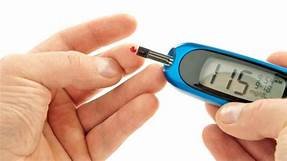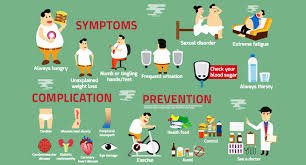CLASSIFICATION AND DIAGNOSIS OF DIABETES

Friends here i am going to share something interesting about diabetics. I had been witnessed a long period of diabetics as my father was suffering from it since 20 years. So with my experiences after discussing with top most doctors of india i am going to share something important with you regarding this. Hope it will help you to understand about the problem.
PART 1
There are several classification systems for diabetics. The WHO classification is mainly based on the aetiology of diabetics. There are main three types of diabetics.
1. Type 1 - Diabetes Mellitus.
2. Type 2 - Diabetes Mellitus.
3. Gestational Diabetes Mellitus.

Diabetes may develop due to other hormonal problems or malnutrition. The common form of diabetes (90%) seen in adults is type 2 diabetes. The differences between type1 and type 2 diabetes are discussed below.
Type one
- Seen in children
- Acute onset
- Less familial in nature
- Triggered by auto immune destruction of pancreatic of beta cells
- lack of insulin secretion
- Needs insulin therapy life-long for survival
Type2
- Common in adults
- Slow onset
- Highly familial
*Triggered by life style factors such as age, obesity,reduced physical activity etc. - Combination of partial defect in insulin secretion and insulin action
*Can be controlled by tablets.
Gestational Diabetes
Gestational diabetes is any degree of clinical glucose intolerance with onset or first recognized during pregnancy. It is appropriate to screen pregnant women between 24 and 28 weeks of gestation. Individuals at high risk for gestational diabetes include older women, those with previous history of glucose intolerance and those with a history of large babies for the gestational age.

Criteria for diagnosis
The clinical diagnosis is often made by the presence of symptoms and high blood glucose levels. Diagnostic confirmation for a person presenting with symptoms and hyperglycemia differs from asymptomatic person. In symptomatic subjects having unequivocally high blood glucose, diagnosis could be made even with a single measurement. For asymptomatic subjects, diagnosis should never be made with single abnormal blood glucose value. The oral glucose tolerance test (OGTT) is more sensitive for diagnosis of diabetes and other pre-diabetic conditions such as impaired fasting glucose (IFG) and impaired glucose tolerance (IGT). If IGTT is performed, fasting and 2 hour glucose values after a 75g oral glucose load are sufficient for diagnosis. Large scale screening for diabetes in the population is not recommended
To be continued in part 2...................